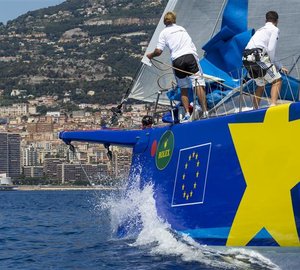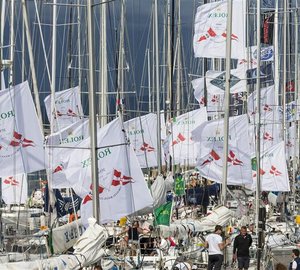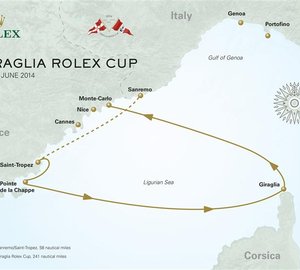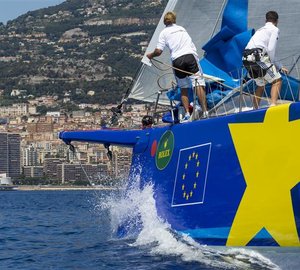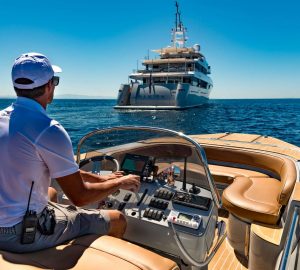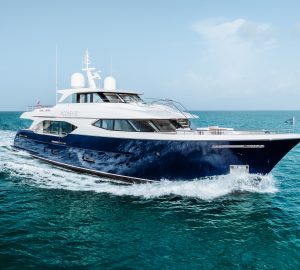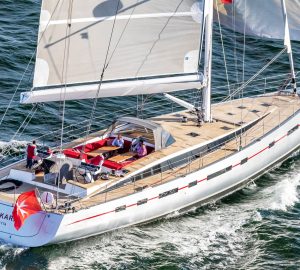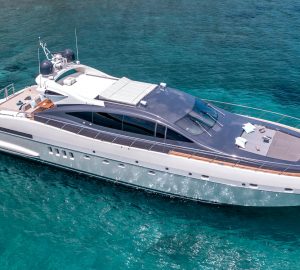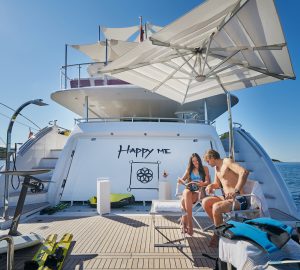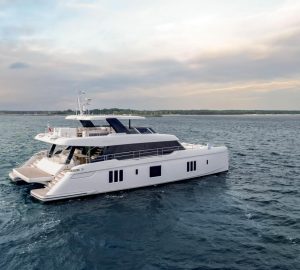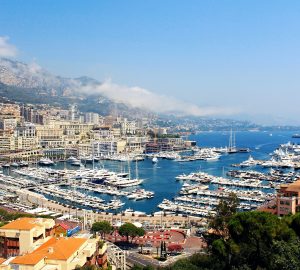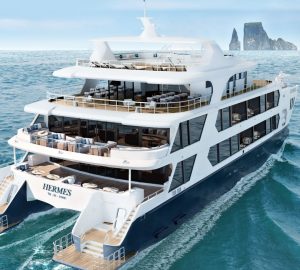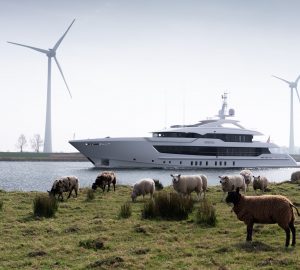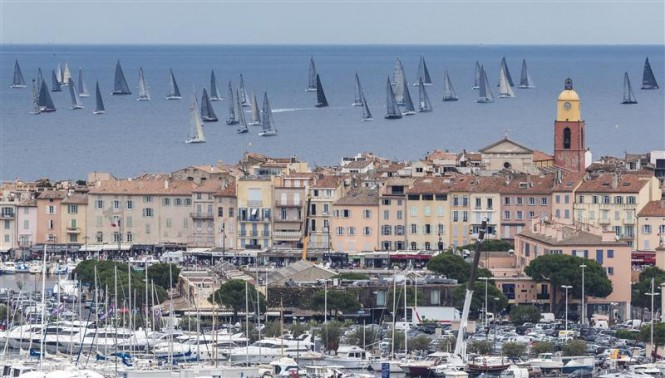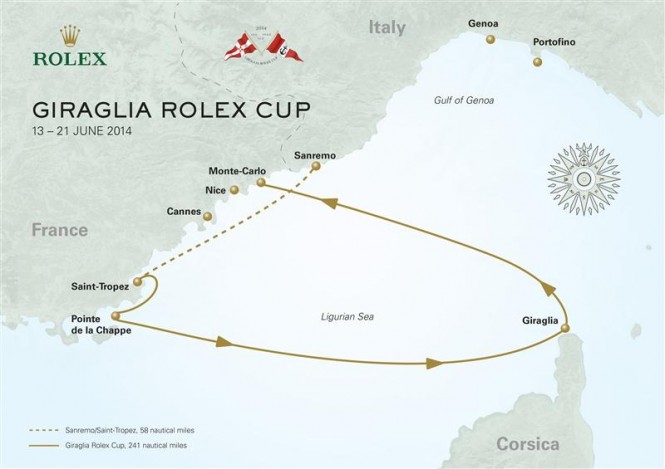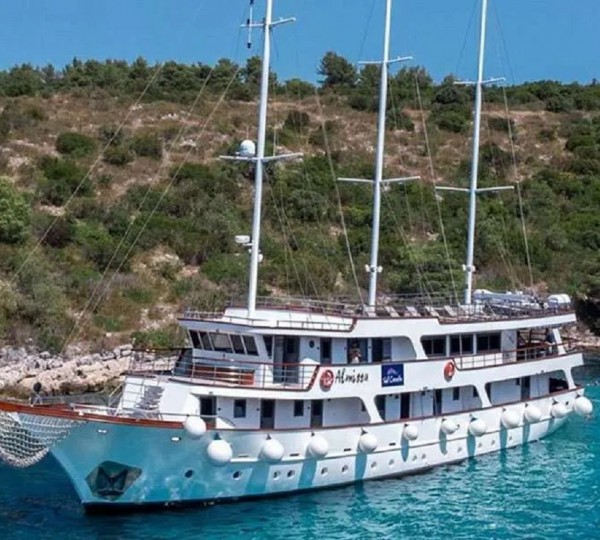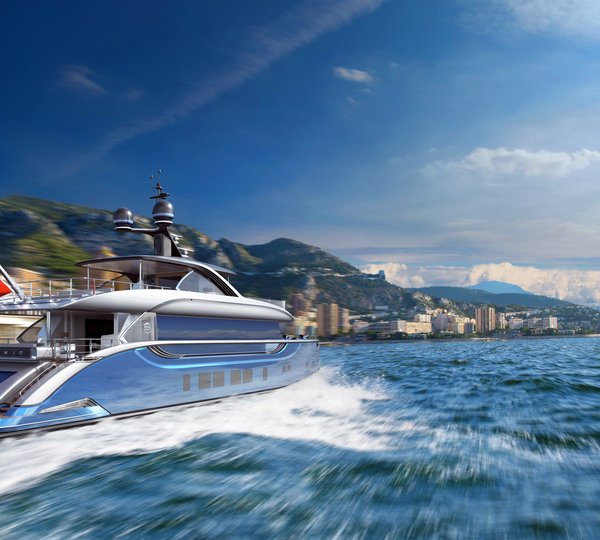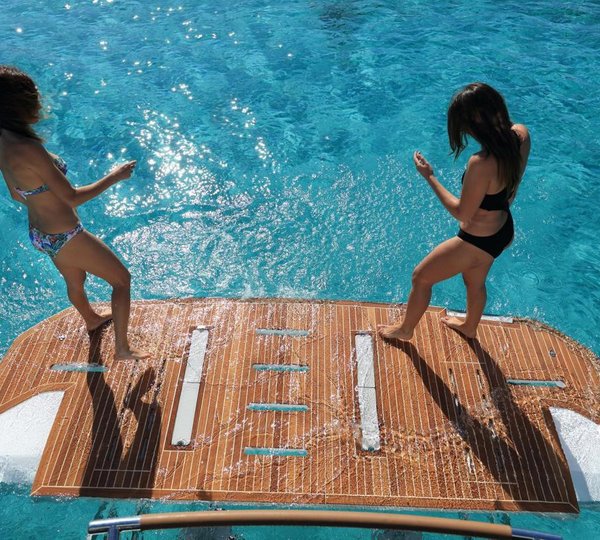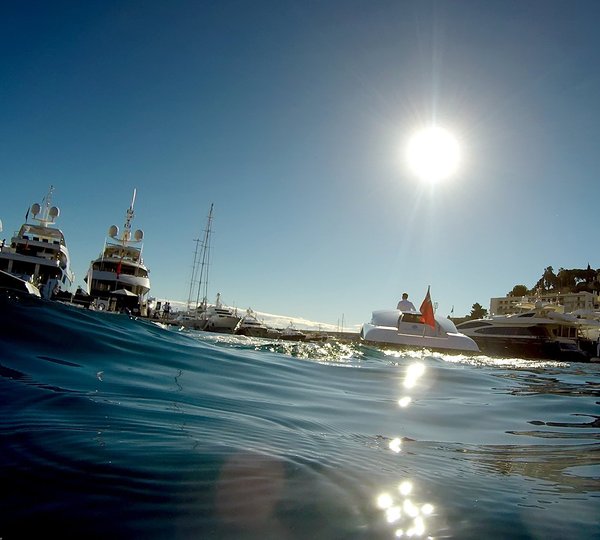A massive fleet of 206 yachts set off on the offshore component of the 62nd Giraglia Rolex Cup under a sky full of low cloud and a sea brushed with a warm, but gentle easterly breeze. With such a large amount of yachts on the water, the beginning of the 241-nm Mediterranean classic provided a beautiful panorama to those watching from both Saint-Tropez and the northern shore of the gulf, of the spectacular French Riviera.
The largest yachts were first away at noon, with the striking blue sails of line honours favourite Esimit Europa 2 yacht plainly visible and contrasting with the dark shades of grey of the other racing yachts and the paler sails of the more Corinthian elements within the fleet. A slow race is forecast with navigators of the fastest yachts expecting somewhere around 30 hours to complete the course, and those of smaller yachts rolling their eyes and looking heavenwards at the question.
Some two hours into the race, at 14.00 CEST, Esimit Europa 2 was just approaching the mark off Cavaliere-sur-mer that marks the turn towards the Giraglia rock, 125-nm in the distance. As expected, the four Racing Mini Maxis were in a tight bunch just behind her.
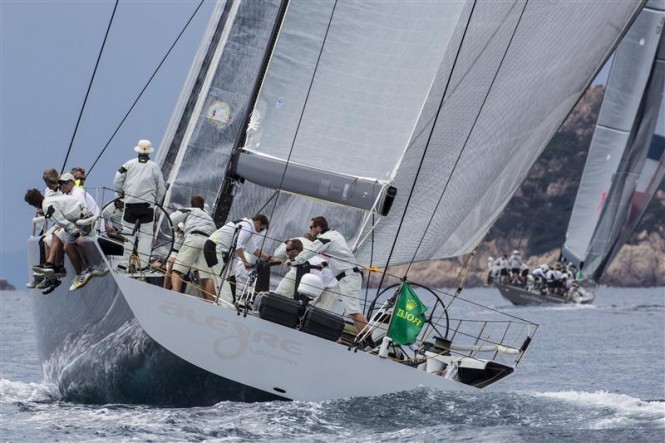
ANDY SORIANO'S ALEGRE (GBR) AT THE START OF THE LONG DISTANCE RACE IN THE 2014 GIRAGLIA ROLEX CUP - Photo by Rolex-Carlo Borlenghi
Before leaving the dock, Jochen Schümann, skipper of the 100-ft Slovenian Maxi commented: “All the models are showing the same: 10 knots in the beginning and then quite a bit lighter at the approach to the Giraglia rock, and the final leg. It may be steady, so no stops. Tomorrow afternoon in Monaco if we are lucky.”
There is nothing on the horizon likely to change the widely held view of a taxing, mentally challenging race. A good, dynamic strategy will be critical to keep moving from one target point to the next, and in managing immediate competition. Sticking to the rhumb (direct) line or gambling on an advantage nearer to the coast or further offshore is the key conundrum facing those yachts with an ambition to win: seamanship of a different sort to that required in more physically challenging conditions.
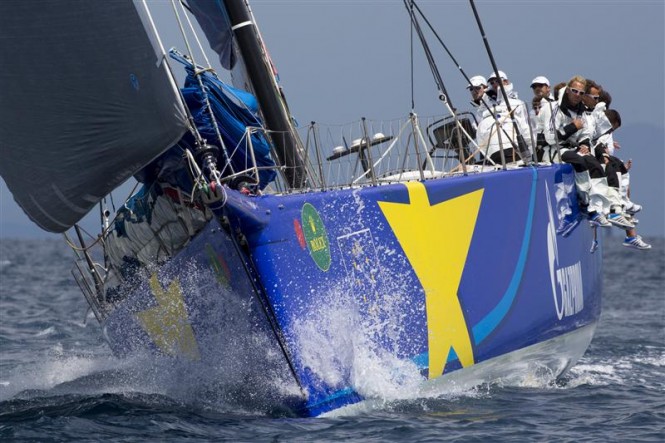
ESIMIT EUROPA 2 (SLO) SHORTLY AFTER THE START OF THE 2014 GIRAGLIA ROLEX CUP OFFSHORE RACE - Photo by Rolex-Carlo Borlenghi
Gordon Kay is an experienced offshore sailor with two laps of the planet under his belt. A member of the Yacht Club de Monaco and racing on the 36-ft Skazka, Kay is hoping to finish in time to enjoy the inauguration of his club’s new headquarters on Friday. First, though, he has the small matter of negotiating the racecourse: “It’s my first time doing the race, and it has been a long held ambition. That it finishes in Monaco this year is something very special. It’s going to be light and tricky. We even may get to use our local knowledge at the finish.”
With one or perhaps two weather transitions to address, correctly positioning one’s yacht to take any advantage to be gained by these changes will be essential. Brad Butterworth, an America’s Cup veteran, sailing on one of the Racing Mini Maxis, Jethou, said: “The million dollar question will be whether to stay with our group or split. There are several decisions to be made on the leg to the Giraglia: whether to stay in breeze on the coast or head offshore. Sailing one’s own race is going to be important.”
As with all long-distance yacht races with a wide spread of sizes in the fleet, the eventual weather pattern will play a key part in determining the overall handicap results of the 2014 Giraglia Rolex Cup. Boris Hermann, navigator on Esimit Europa 2 echoed a fear among the larger yachts that a change in the wind after they have finished will favour smaller, slower yachts still rounding the Giraglia rock.
Tomorrow should present a clearer picture how the race is unfolding.
206 yachts started the 62nd Giraglia Rolex Cup offshore race, which exceptionally in 2014 takes the fleet 241-nm from Saint-Tropez to Monte-Carlo, via the Giraglia rock. There were four starting groups, as follows:
12:00 Group 0 (Largest/Fastest yachts)
12:38 Group A
12:47 Group B
13:04 Giraglia x2 (Double-handed)
The prize giving is scheduled for noon on Saturday, 21 June 2014 at the Yacht Club de Monaco.

